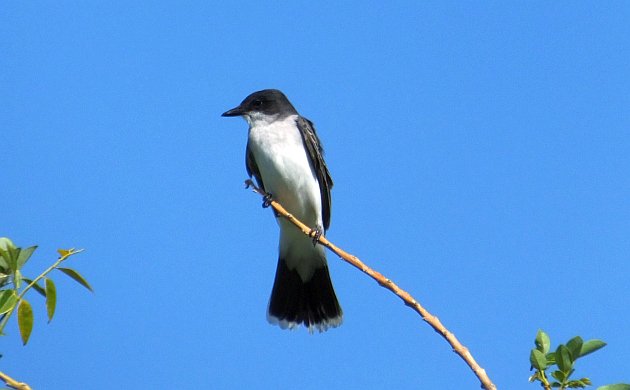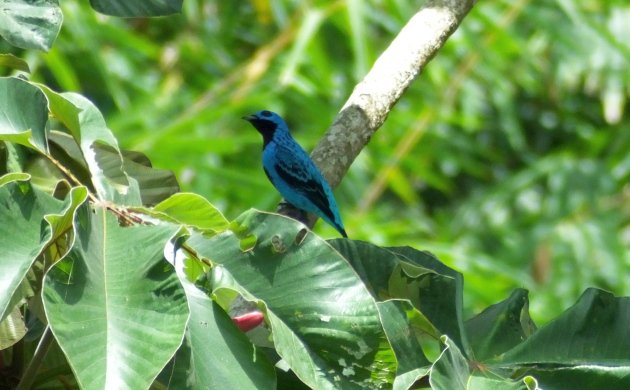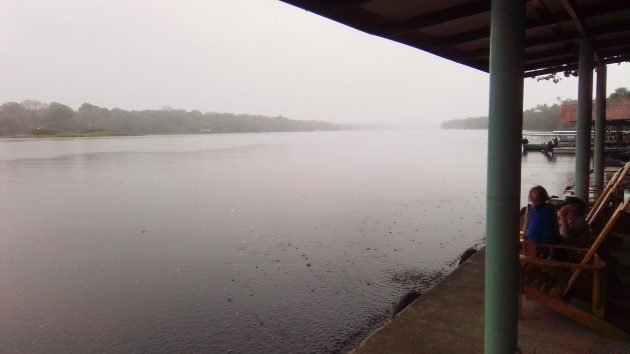
Birds are arriving in North America, flying from places far to the south. Many come from Central America, a good number fly much further. When birding in parks and woodlots of Ohio, Virginia, and Toronto, places with groves of maples and old craggy oaks, it can be hard to imagine that the Red-eyed Vireos of constant song were foraging for caterpillar larvae in rainforest just a few months earlier. When we casually watch a pair of Eastern Kingbirds call from fence posts of old fields or fly up to chase a local Red-tailed Hawk, how would one ever guess that, in February, those same birds were carousing with Fork-tailed Flycatchers at fruiting trees in the remote Amazon? When good old Chimney Swifts were doing their usual summer routine of zipping and twittering above towns and cities, how could they have ever been foraging over a rainforest canopy dotted with the shining turquoise of cotingas?

The truth is, many of those familiar birds have traveled much further than us. Many Red-eyed Vireos have seen Harpy Eagles, have kept still upon hearing the haunting calls of forest-falcons. The same can be said of Scarlet Tanagers, Canada Warblers and Eastern Wood-Pewees. All of those birds also fly to and from the woods of Pennsylvania to parts of the Amazon rainforest and back. As they make their incredible, biannual winged trek, they also pass through Costa Rica. Literally in the millions.
I know, it sounds like hyperbole, surely it should be in the hundreds, maybe thousands, but millions? Based on population estimates and migration routes, yes, millions, and for some species, many millions!

That doesn’t mean that all of the Red-eyed Vireos or Eastern Wood-Pewees, or Scarlet Tanagers flying through Costa Rica stop there. I’m sure quite a number just keep on going through the tropical night sky, find their way to woods in Nicaragua or further north but a good number do indeed stop in Costa Rica, go birding there now and you will see them. While birding in the humid lowlands of Costa Rica last week, I saw some of them, saw quite a few in the migration hotspot of the Caribbean coast.
I caught some of the first main ranks of that million bird migration on the way to my destination, Tortuguero National Park. A stop at the one area of mature lowland rainforest next to the road to the boat “docks” at La Pavona was replete with a fine mix of resident rainforest species and migrants. Many of the migrants were visiting a fruiting tree. In a couple minutes, I counted at least 20 Red-eyed Vireos (yes, they eat fruit), a dozen Scarlet Tanagers, a few Great-crested Flycatchers, and a few more Sulphur-bellied Flycatchers while Eastern Wood-Pewees called from 4 different spots.
Other stops revealed more Red-eyed Vireos, additional Scarlet Tanagers, and a few Summer Tanagers but the biggest movements of birds took place right on the coast. While birding and watching from the village of Tortuguero and from the docks of the cozy Casa Marbella Bed and Breakfast, it was there that I enjoyed the aerial river of Chimney Swifts, of Cliff and Barn Swallows, and Eastern Kingbirds.

There always seemed to be some birds moving through the tropical skies but the biggest flocks passed overhead in the morning, especially when the rains stopped. Have you ever seen a flock of 500 Eastern Kingbirds doing their best swallow imitation? How about 500 and then 300 and then another 500 and so on, moving constantly past like some odd version of a winter finch irruption or spring blackbird migration.

As the kingbirds fly high overhead, others dotting the rainforest canopy, imagine a constant movement of Cliff Swallows, many high overhead, maybe around a few hundred a minute, every minute for hours, maybe even most of the day. Barn Swallows also fly with them and the Chimney Swifts seem to nearly match them in numbers. Yeah, I daresay those birds do pass through Costa Rica in the millions. The same goes for Panama, Nicaragua, Honduras, and other places along their migration routes. For birds, there are no borders.
From the Amazon to Ohio, protecting birds also means protecting habitat through supporting and promoting sustainable use from home to the foothills of Colombia. The songs of summer vireos are one of the voices of the north but ancestral inspiration for their tunes comes from tropical places way to the south. When you see and hear them, please consider supporting organizations like Partners in Flight and The American Bird Conservancy, support bird friendly policy and and buy Songbird friendly coffee. Whether they or we like it or not, those birds are depending on us, millions of them.











Hi Patrick,
Enjoyed your article very much, describing very well what one can witness now in CR. We just moved from Pacific to Caribbean and feel the migration even stronger. Each day brings surprises, either a flock of Mississippi Kites or thousands of Hawks. I know there are hundreds of excellent birdphotographers in CR and Panama but if there is a need for some photos for the planned apps I might be able to help. All the best. Gabor
@Gabor- Glad you enjoyed it and are in a good spot for migration. Thanks!